
JAPANESE PRINTS
A MILLION QUESTIONS
TWO MILLION MYSTERIES
Ukiyo-e Prints浮世絵版画 |
|
Port Townsend, Washington |
|
UTAGAWA KUNISADA II |
|
二代歌川国貞 |
|
うたがわくにさだ |
|
1823-1880 |
|
Series Title: Collection of Popular Flowers from the Tale of Genji |
| Print Title: Narcissus |
|
Date: 1861, 7th Month |
|
Bunkyū 1 |
|
Publisher: Etsuka |
|
越嘉 |
|
えつか |
|
Carver: Hori Chō (Katada Chojirō) |
|
彫長 |
|
ほりちょう |
|
|
|
Print Size: 14 3/4" x 10" |
|
Illustrated:
Another copy of this
print is shown on line at the Boston Museum of Fine Arts
Although this is posted as a Kuniyoshi at the museum's site it is only done so because it glued to the back of the featured item with the accession number 11.39687a.
There is another copy of this print in the collection of the Museum für angewandte Kunst in Vienna. |
|
|
|
SOLD! THANKS K! |
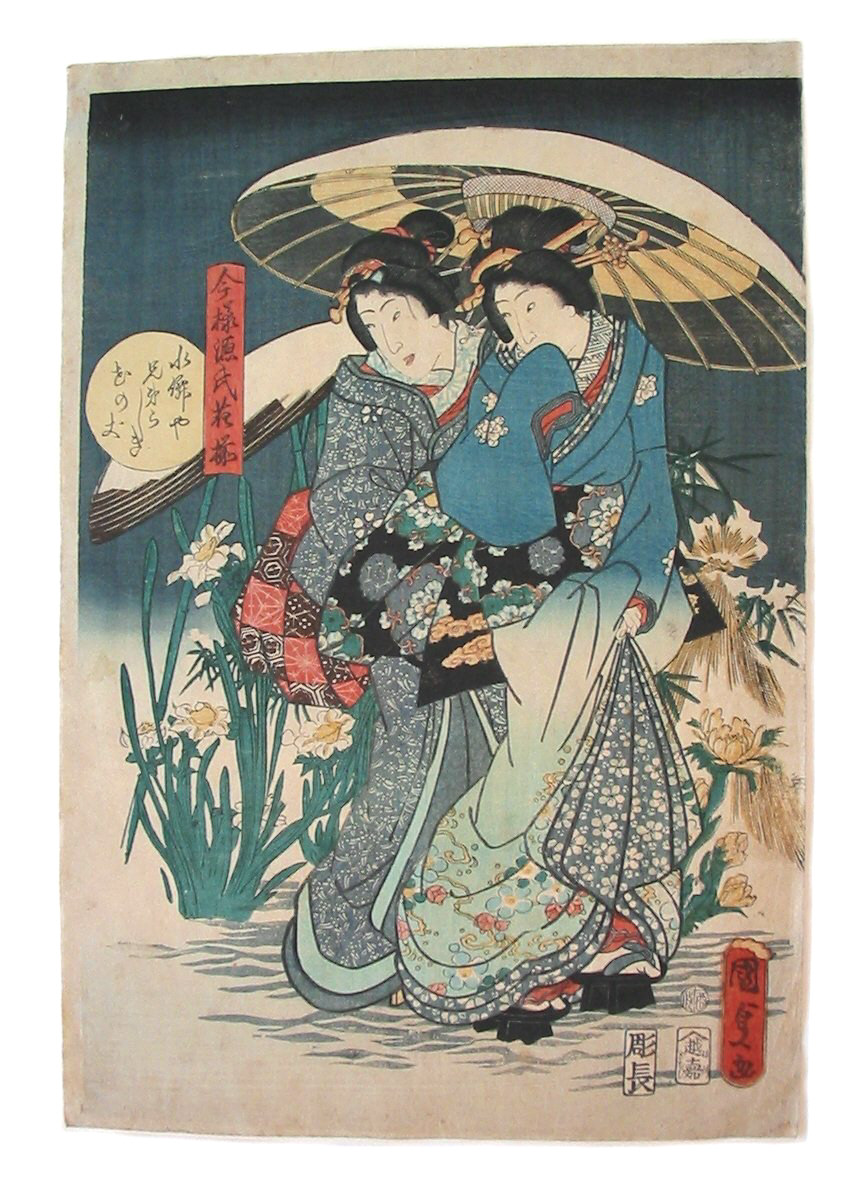
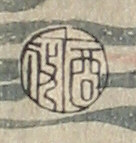 |
||
|
Date Seal: 1861, 7th Month |
||
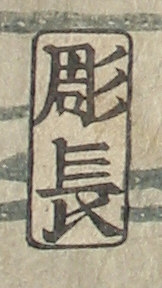 |
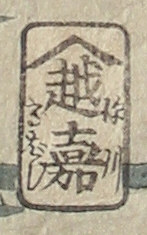 |
|
|
Carver: Hori Chō |
Publisher: Etsuka | |
| 彫長 | 越嘉 | |
| ほりちょう | えつか | |
|
A TRIFLING LITTLE MOTIF: THE RHINOCEROS HORN |
|
|
|
SAIKAKU 犀角 さいかく |
|
For a number of years I gave museum tours to fourth graders. We would usually start in the Pre-Renaissance/Renaissance room which displayed a lot of religious paintings. I would tell the children that it was going to be a long hour and so we should start out by sitting on the floor. This relaxed them. Being a man with trousers I could join them unlike the usual lady docents who were instructed to wear skirts. It also put me on their level. I would ask them to look around the room and then call on one of them to tell me who was represented in a picture I was pointing at. The child always said correctly "Mary and the baby Jesus." I would tell them that was very good, but then I would ask them to tell me how they knew who it was. Invariably they would say that it was the halos. Then I would point at a different painting --- same theme --- and ask the same question. Same answer. However, I would point out there were no halos in that one. This would lead into their first discussion of iconography where I would explain to them that generally the Virgin would be wearing three basic colors --- red, white and blue --- and have them guess what each color signified. They always got it. By the end of the hour and many rooms later they did not want to stop and I felt they had learned something productive they could take home with them. I always gave them a short quiz before they would reboard their school bus and they always passed with flying colors. |
|
About two months ago --- today is March 2, 2004 --- a fellow sent me an image and asked me if I knew what one particular motif was and what it signified. I knew generally, but had forgotten the specifics. Shortly thereafter I answered him: it was the rhinoceros horn motif. Merrily Baird discusses it in her Symbols of Japan: Thematic Motifs in Art and Design published by Rizzoli in 2001. She illustrates the stylized rhinoceros horn cup on pages 227 and 229. The first is shown among the "Myriad Treasure" (takaramono or 寳物 - たからもの) which are often linked to the Seven Propitious Gods. |
|
Baird notes that the horn was thought to have "protective qualities" against such dangers as poisoning and that in China it was included as one of the Eight Ordinary Treasures. (Baird, p. 229) |
|
Today I was examining the print shown on this page and noticed for the first time that the rhinoceros horn formed the main motif on the robe of the woman on the left. (I had chosen the floral detail of the woman on the right as the wallpaper on this page, but had not until now been even vaguely aware of the other design.)
All of this leads me to one final thought which must go unprovable. I would suspect that by the time these woodblocks were carved it was very possible that the carver knew them only as a motif and not what they meant. If you were able to take a survey of contemporary Japanese there are probably very few who would recognize the horn's significance. By comparison the same intellectual distance is true in the West for even the most devout Christians when it comes to an awareness of the colors which invariably draped the Madonna. |
|
In The World of the Shining Prince: Court Life in Ancient Japan by Ivan Morris the author describes the furnishings of the typical Heian residence. "In the centre of the larger apartments was a chōdai ('curtain platform'), which served as a sort of bedchamber-cum-withdrawingroom. The chōdai was a black platform about two feet high and nine feet square.... Rhinoceros horns were suspended above one end of the platform to ward off illness and opposite them was a pair of mirrors to keep the evil spirits at bay. |
|
|
|
The World of the Shining Prince: Court Life in Ancient Japan, by Ivan Morris, Kodansha International, 1994, p. 31. |
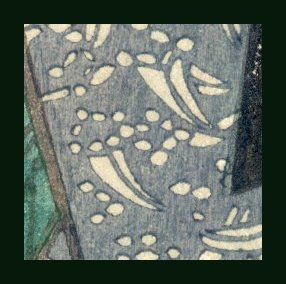
 HOME
HOME